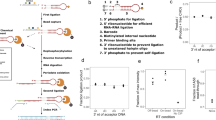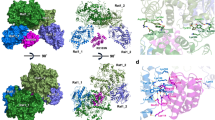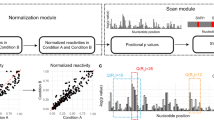Abstract
RESULTS of two previous studies1,2 using successive competition DNA–RNA hybridization procedures suggested the synthesis of “unique” species of RNA during a one way active shock avoidance task. Here we describe two experiments in which brain RNA from shock avoidance trained rats competed with brain RNA from shocked yoke controls. The results of both experiments suggest the presence of “unique” RNA species during learning.
This is a preview of subscription content, access via your institution
Access options
Subscribe to this journal
Receive 51 print issues and online access
$199.00 per year
only $3.90 per issue
Buy this article
- Purchase on SpringerLink
- Instant access to full article PDF
Prices may be subject to local taxes which are calculated during checkout
Similar content being viewed by others
References
Machlus, B., and Gaito, J., Psychon. Sci., 10, 253 (1968).
Machlus, B., and Gaito, J., Psychon. Sci., 12, 111 (1968).
Gillespie, D., and Spiegelman, S., J. Mol. Biol., 12, 829 (1965).
Zemp, J. W., Wilson, J. E., Schlesinger, K., Boggan, W. O., and Glassman, E., Proc. US Nat. Acad. Sci., 55, 1423 (1966).
Gaito, J., Molecular Psychobiology, (C. C. Thomas, Springfield, Ill., 1966).
Author information
Authors and Affiliations
Rights and permissions
About this article
Cite this article
MACHLUS, B., GAITO, J. Successive Competition Hybridization to detect RNA Species in a Shock Avoidance Task. Nature 222, 573–574 (1969). https://doi.org/10.1038/222573a0
Received:
Revised:
Issue date:
DOI: https://doi.org/10.1038/222573a0
This article is cited by
-
RNA synthesis in the rat brain during changes in CNS function
Bulletin of Experimental Biology and Medicine (1975)
-
Competitive Hybridization with Brain RNA fails to confirm New RNA induced by Learning
Nature (1971)
-
RNA Species during Visual Stimulation
Nature New Biology (1971)
-
Suppression of memory in rats by brain antibodies of trained rats
Bulletin of Experimental Biology and Medicine (1971)



